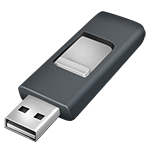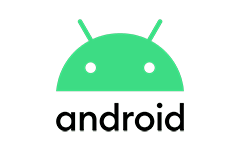Factors to Consider when purchasing a New Device
Printer Friendly VersionOther Resources: Collection of Popular Abbreviations used in texting and tweeting | Computer Usage Tips | "Old" Device to New Device Migration Guide | Phone Contacts Export-Import Guide | Smartphone and Tablet Usage Basics
Factors to consider when purchasing a new, refurbished/used/pre-owned Handheld (Smartphone or Tablet):
- Can a memory card be added to upgrade storage?
- how often does the device receive OS version updates (determines if apps need to be upgraded)
- Is the OS version capped (will not be updated to the latest version)?
- If capped, can the original "factory"/stock OS be replaced with an alternative ROM (to run future apps)?
- Can it be repaired and are replacement parts (screen, battery, mainboard, charge ports, charge cables, car/wall chargers) available/affordable?
Lesser known brands may have the same build quality, features and performance as traditional industry flagship devices at less than half the cost. Research hardware specs and pay attention to what customers love or consistently complain about.
Note too that some devices are tied to a service provider so that the device appears inexpensive but aggressively & creatively market a multi-year tiered subscription plan (data & voice mins etc.)
Provided that devices are unlocked (not tied to a service provider and compatible with local phone networks, you are free to use your device with a prepaid SIM or utilize personal or public WiFi.
- Dustproof
- Drop/Scratch proof
- Waterproof (rain water droplets vs full immersion)
- Temperative resistant
- Charge Port Type (0% chance of being damaged inserting the charge cable)
- Made of plastic, glass or Aluminum (will it crack, shatter or bend)?
- Can I easily purchase a rugged case and screen protector for it?
- this refers to devices where the back cover can be removed when the device needs to be reset or a defective battery has to be replaced.
- Higher end devices tend to be sealed so that the device has to be disassembled (by a skilled technician) to accomplish this.
- Also, while bigger batteries take longer to charge till full, at full capacity, you will get a lot more use out of it before it needs to be recharged. Put another way, it needs to be charges less often.
Processor type, # of cores (Note that 4 and 8 cores are more more powerful and efficient thus it is noticeably faster than single or dual core devices),
RAM (temporary storage) and ROM (drive space) - To illustrate, inexpensive entry level devices may have just 1GB RAM and 16GB ROM versus flagship models that by comparison have 12GB RAM and 256GB ROM and are undeniably much faster and smoother while running more system intensive apps.
On the other hand, large devices are great for viewing and touch typing but don't make good cameras or voice call devices especially if device is heavy, you have small hands or short fingers and can't easily reach phone buttons on the back and side and lastly, you don't have a quick, convenient way to hide or store it.
In summary, the more robust its hardware and software, the more device and safety features it supports, the more expensive it is to purchase however owners may look forward to higher resale values.





